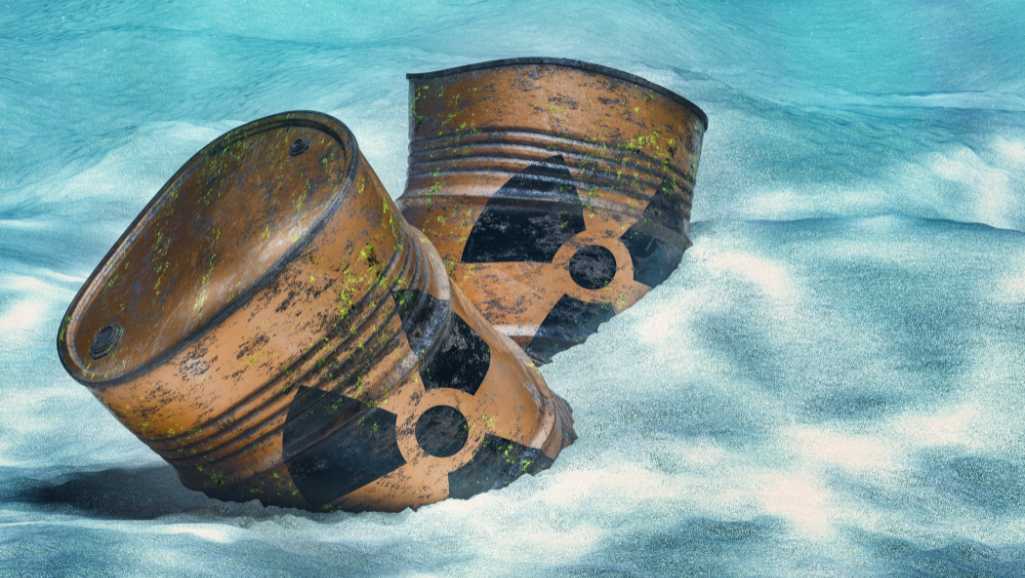You’ve probably seen it in movies – the eerie, glowing aftermath of a nuclear explosion. But have you ever wondered how long that deadly radiation sticks around? In this article, we’ll unveil the lingering effects of nuclear radiation. You’ll learn about the types of radiation, the factors that influence its lifespan, and what you can do to protect yourself. So, ready to dive into the world of nuclear science? Let’s get started!
Understanding Nuclear Radiation
To understand how long radiation from a nuclear bomb lasts, you’ll first need a basic grasp of what nuclear radiation actually is. In its simplest terms, nuclear radiation is the energy particles or rays that are given off from a radioactive element. It’s crucial to know that nuclear energy isn’t inherently bad. It’s used in medicine, power generation, and even food preservation. However, when it’s uncontrolled, as in a nuclear bomb, the effects can be devastating.
Now, let’s talk about radiation measurement. This is how we determine the amount of radiation present in an environment or object. It’s measured in units called Sieverts, but you’ll often see it in smaller units like milliSieverts or microSieverts. This measurement helps us understand the level of risk associated with exposure to nuclear radiation.
The Science of Nuclear Explosions
When considering the science of nuclear explosions, you’ll find that a significant amount of the radiation from a nuclear bomb comes from the fallout, which can last for decades or even centuries.
The explosion mechanics play a significant role in this. Upon detonation, the bomb emits an initial burst of radiation, but it’s the secondary radiation from the fallout that you must worry about. This fallout is a mixture of radioactive materials that are propelled into the atmosphere, later falling back to Earth and contaminating large areas.
Now, let’s look at the fission process. This is essentially how a nuclear bomb works. You have an atom, usually uranium or plutonium, that’s bombarded with neutrons. Once a neutron hits the atom, it splits, releasing a massive amount of energy in the form of heat and light – the explosion. But the fission process also releases additional neutrons, causing a chain reaction. It’s this chain reaction that leads to the destructive power of a nuclear bomb.
In essence, the radiation from a nuclear explosion can last a long time, thanks to the explosion mechanics and the fission process. Understanding this is vital for assessing the long-term effects of nuclear incidents.
Types of Radiation Emitted
Now, you’re probably wondering about the various types of radiation that a nuclear bomb emits, and how long each type lasts. Well, there’s quite a diversity in radiation sources when it comes to nuclear explosions. The main types include alpha, beta, gamma, and neutron radiation. Each type has different properties, impacts, and durations.
Alpha particles are large but slow-moving, and they don’t penetrate far into materials, including your skin. They become dangerous if ingested or inhaled. Beta particles are smaller, faster, and can penetrate further. Both alpha and beta particles don’t last long, they quickly lose their energy.
Gamma rays and neutrons, however, are a different story. They are highly penetrating and can move through solid materials. These types of radiation can last longer, especially in the case of fallout, where radioactive debris is spread by the explosion.
You might be thinking, “How do we know all this?” Well, using radiation measurement techniques, scientists can detect and measure these types of radiation. These techniques involve specialized equipment like Geiger-Muller counters and scintillation detectors. So remember, the type of radiation and its duration can vary greatly based on the bomb and the conditions of the explosion.
Factors Influencing Radiation Lifespan
Several factors can impact how long the radiation from a nuclear bomb lasts, and you’ll find it’s not a one-size-fits-all situation. It’s primarily determined by the type of radiation, the extent of Radiation Containment and the efficiency of the Post Explosion Cleanup.
Here, let’s break it down:
| Factor | Influence on Radiation Lifespan | Description |
|---|---|---|
| Type of Radiation | High | Some types of radiation decay faster than others |
| Radiation Containment | Moderate to High | Effective containment can reduce the spread and longevity of radiation |
| Post Explosion Cleanup | High | Prompt and efficient cleanup can significantly reduce radiation duration |
If the bomb emits short-lived isotopes, the radiation won’t last as long. The level of Radiation Containment in place also influences the lifespan. A well-contained explosion will result in less spread and shorter lifespan of radiation. The efficiency and promptness of the Post Explosion Cleanup also play a critical role. A swift cleanup can significantly reduce the duration of radiation exposure. Remember, these factors aren’t independent; they interact, and their cumulative effect determines the radiation’s lifespan. Understanding these factors can help in planning and executing effective containment and cleanup strategies.
Effects of Prolonged Exposure
If you’re exposed to nuclear radiation for an extended period, the health consequences can be severe. Your body’s cells can be damaged, leading to a condition known as Acute Radiation Syndrome, or radiation sickness. Symptoms might include nausea, fatigue, hair loss, and potentially more serious conditions like cancer or death.
Health impact studies have shown that long-term exposure can cause chronic health issues. For instance, thyroid cancer is a common after-effect of radiation exposure, as the thyroid is particularly sensitive to radiation. Other long-term effects can include genetic damage, which can lead to birth defects in future generations.
Radiation sickness treatments exist, but they’re largely supportive, focusing on managing symptoms and reducing suffering. Depending on the severity of exposure, treatments might involve blood transfusions, antibiotics, or stem cell transplants. However, these treatments can’t reverse cellular damage already done.
Methods of Radiation Protection
Despite the dire consequences of nuclear radiation exposure, you can take specific steps to protect yourself and minimize the risks. It’s important to understand the different methods of radiation protection that are available. These methods mainly involve the use of Radiation Shielding Materials and Personal Protective Equipment (PPE).
The use of Radiation Shielding Materials is crucial in preventing radiation exposure. These materials, often lead or concrete, absorb and block the radiation, reducing its harmful impact on your body.
Moreover, the importance of using Personal Protective Equipment cannot be overstated. This includes items like lead aprons, thyroid shields and lead gloves that protect your body from direct exposure.
Let’s summarize the key points:
- Use Radiation Shielding Materials to block and absorb radiation.
- Wear Personal Protective Equipment to prevent direct exposure.
- Regularly check and maintain your protective equipment to ensure its effectiveness.





